

"In a sense, I might say, whereas Dennis Gabor's desire to get into holography was based on his desires to see atoms, I feel beyond seeing atoms, I am interested in seeing my brain." Lloyd Cross,
There is no one better qualified to give a history of the Multiplex Company than one of its founders, Lloyd Cross. Here is his own typewritten story, written in about 1977 or 1978.
And another one of his first person histories, that of the laser as published in Radical Software, Volume I, No. 2.
Lloyd makes the social scene in this (unnamed, but dated) newspaper clipping of the Laser Ball at the Detroit Institute of Arts mentioned in the above.
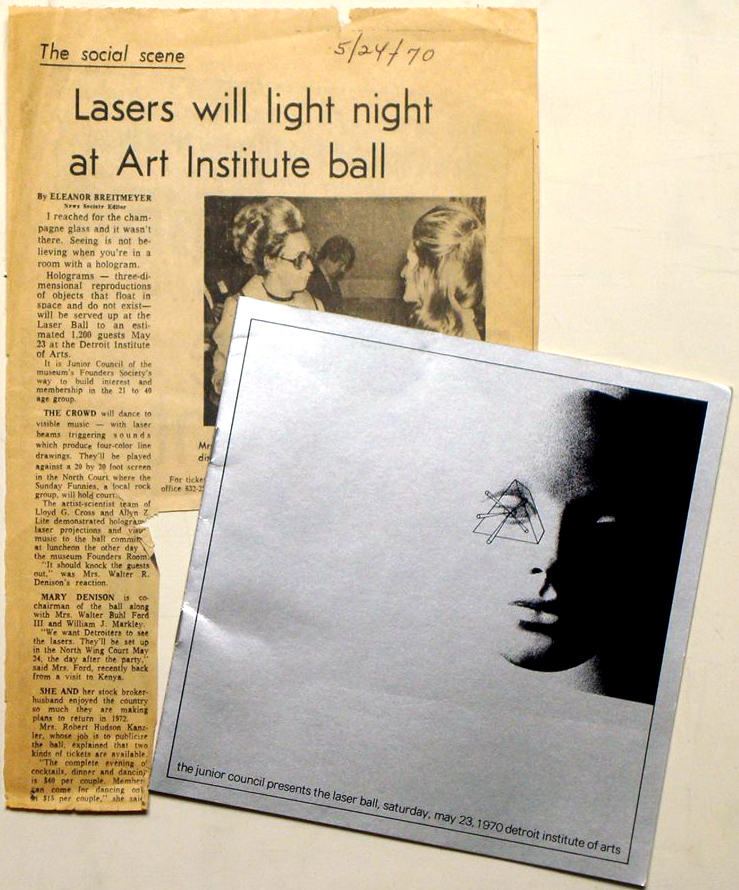
Here is a hippie-trippy article about Lloyd and his bunch of Merry Pranksters as reported by Rolling Stone magazinein their August 30th, 1973 issue. (I may have even had a subscription to it back then, but I don't remember the article!)

Although the Multiplex Company claimed to have a somewhat hippie style business plan, click here to go to John Fairstein's site to find out what it was really like to deal with them, under the 1976-77 Baltic link. And what the heck, read all of them! They're a lot of fun! (Below is a screen shot of the page, so the links don't work.)
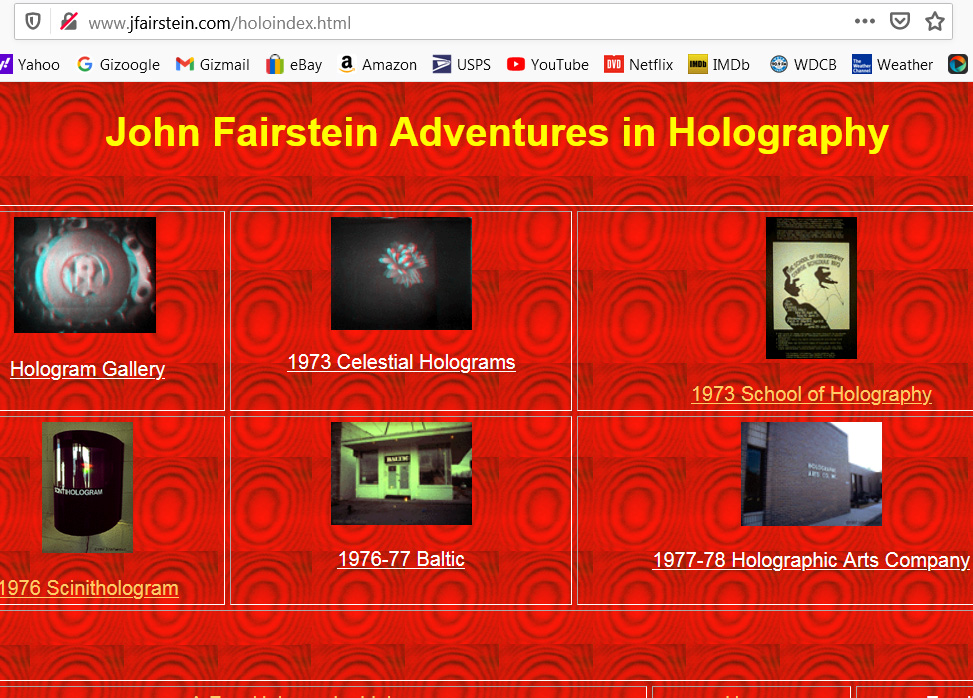
Notice not only the postmark on this Multiplex brochure below, but the man on the stamp was a major fan of stereo photography in the mid 19th century! He invented the most popular of stereoscopes, which bear his name! Click here for the brochure.
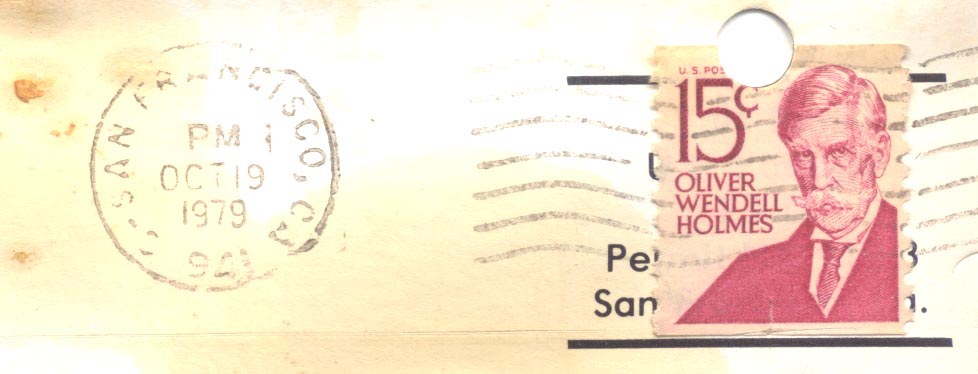
(Ooops! After checking the facts, the man on the stamp is Oliver Wendell Holmes, the son of the inventor of the Holmes Stereoscope! But I am sure that both of the Holmeses would be delighted in viewing Multiplex holograms!)
If one were to want to have their own Multiplex hologram printed, one would have to follow the instructions detailed here.

This is a picture of one of the printers, courtesy John Fairstein
This advertisement, unfortunately undated, appeared in Scientific American. Holex of Norristown, Pennsylvania, USA, was the middleman, but they had been producing their own line of laser transmission holograms since the early '70's.
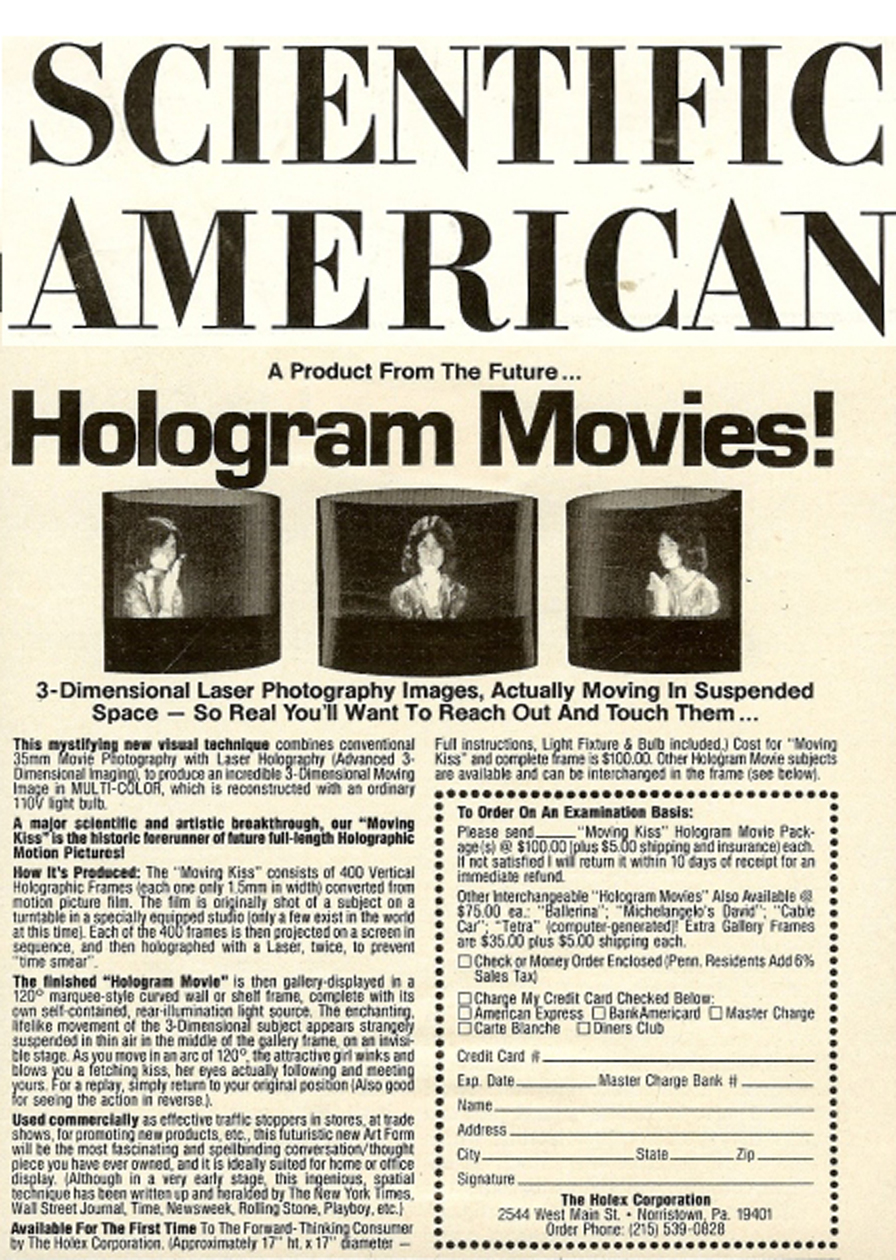
Emmett N. Leith, in Scientific American, called them "Some of the most dramatic and sophisticated of all holograms", and even offered some improvements in the optical train of the printer in Optical Engineering, January/February 1985, Vol. 24, No.1, pp.171-175.
Another academic group at the University of Dayton delved into the optics of the printer, here are a pair of their papers, "Optical Techniques for Increasing Image Width In Cylindrical Holographic Stereograms," Proc. SPIE 215, Recent Advances in Holography, (1980), and "Use of a Holographic Lens for Producing Cylindrical Holographic Stereograms, Optical Engineering 20(2), 236 -240 (March /April 1981). They also published in The Proceedings of the First International Symposium on Display Holography. Lloyd Huff and Richard Fusek are the co-authors, the former had made an Nd:YAG solar pumped laser! (Need to find the article in Laser Focus!) The idea would be to use sunlight directly to pump the rod for the laser in a satellite, and use that laser for communications, without having to convert the sunlight to electricity with the solar panels, and then into pump light for the rod.
A famous Multiplex hologram with a fabulous story is the "Scintihologram", described by its auteur here, and this author's involvement with it here.
Check out Jason Sapan's Holographic Studio, at 240 East 26th Street, New York, NY, to see dozens of integral holograms made by Dr. Laser himself or the Multiplex Company.
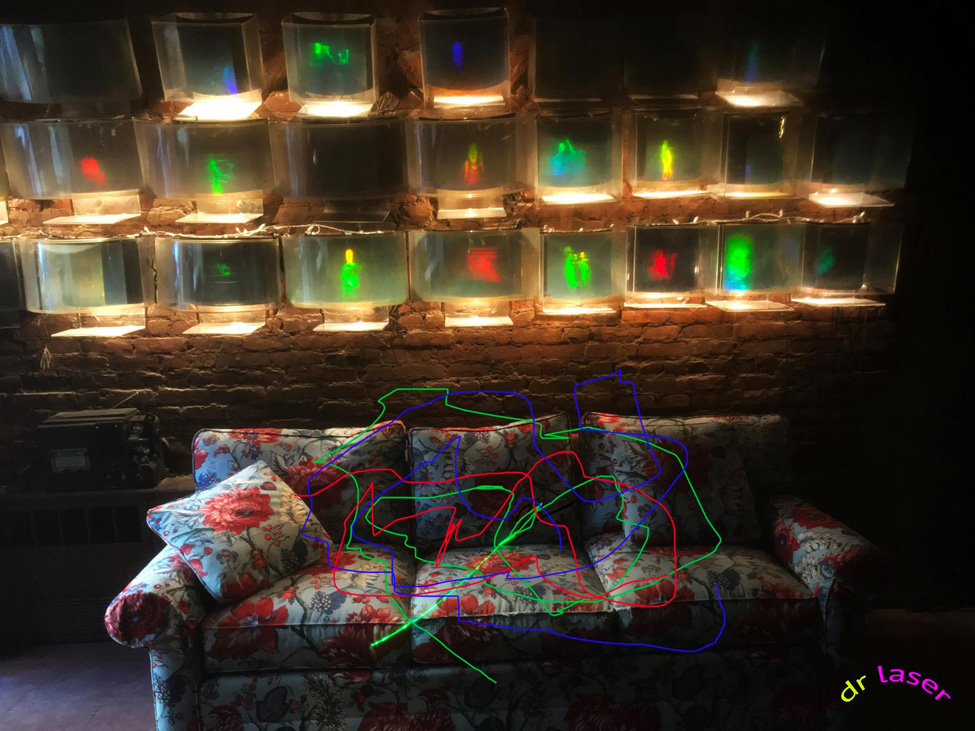
Photo Credit: Abe Rezny, via Facebook